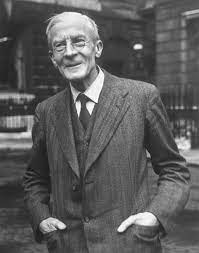Why was Edgar Douglas Adrian Awarded the Nobel Prize for Physiology or Medicine in 1932?
Edgar Douglas Adrian: Nobel Laureate for Advancing the Understanding of Nerve Signaling (1932)
Edgar Douglas Adrian, a British physiologist, made significant contributions to the field of neurophysiology during the early 20th century. Renowned for his groundbreaking research on nerve signaling and the electrical activity of the nervous system, Adrian played a pivotal role in advancing our understanding of neural communication. In recognition of his exceptional work, he was awarded the Nobel Prize for Physiology or Medicine in 1932. This article explores the reasons behind Adrian’s prestigious honor and highlights his remarkable scientific breakthroughs.

Electrical Activity of Nerves and the Discovery of Action Potentials:
Edgar Douglas Adrian’s Nobel Prize was primarily awarded for his investigations into the electrical activity of nerves. In the 1920s, Adrian conducted pioneering experiments that led to the discovery and characterization of action potentials, the electrical impulses that propagate along neurons.
Through meticulous recordings and measurements, Adrian demonstrated that nerve cells generate and transmit electrical signals, providing the basis for communication within the nervous system. His work revealed the fundamental nature of action potentials and their crucial role in neural communication.
Mapping Sensory Functions:
Adrian’s research extended beyond action potentials to the mapping of sensory functions in the nervous system. He investigated the specific pathways and regions involved in sensory perception, unraveling the intricate organization of the sensory pathways and their connections to the brain.
Adrian’s experiments involved recording electrical signals from sensory nerves and correlating them with the perception of various sensory stimuli. His work provided crucial insights into the localization and processing of sensory information, expanding our understanding of the neural basis of perception.
Contributions to Electroencephalography (EEG):
Adrian’s contributions also encompassed the development of electroencephalography (EEG), a technique that measures the electrical activity of the brain. He pioneered the use of scalp electrodes to record the brain’s electrical signals, enabling the non-invasive assessment of brain activity.
His studies on EEG not only advanced our understanding of brain function but also paved the way for the diagnosis and monitoring of neurological disorders. EEG has since become an essential tool in clinical neurophysiology and neuroscience research.
Recognition and Legacy:
Edgar Douglas Adrian’s Nobel Prize for Physiology or Medicine in 1932 celebrated his exceptional scientific achievements and the transformative impact of his research on nerve signaling and brain activity. His discoveries regarding action potentials, sensory mapping, and EEG significantly advanced our understanding of the nervous system’s electrical properties and its role in sensory perception and brain function.
Adrian’s work laid the foundation for subsequent investigations into neural communication, brain mapping, and the study of neurological disorders. His pioneering contributions continue to influence the fields of neurophysiology and clinical neurology, providing a framework for further advancements in our understanding of the intricate workings of the nervous system.
Edgar Douglas Adrian’s Nobel Prize in 1932 recognized his groundbreaking contributions to neurophysiology and his pivotal role in unraveling the electrical activity of nerves. His investigations into action potentials, sensory mapping, and EEG opened new avenues for understanding the functioning of the nervous system and the intricate processes underlying sensory perception and brain activity.
Adrian’s legacy continues to shape the fields of neurophysiology and clinical neurology, inspiring further research and advancements in our understanding of the complexities of the human brain and the wonders of neural communication. His work serves as a testament to the power of scientific inquiry and innovative research in advancing our knowledge of the intricate mechanisms that govern the functioning of the human body and mind.




